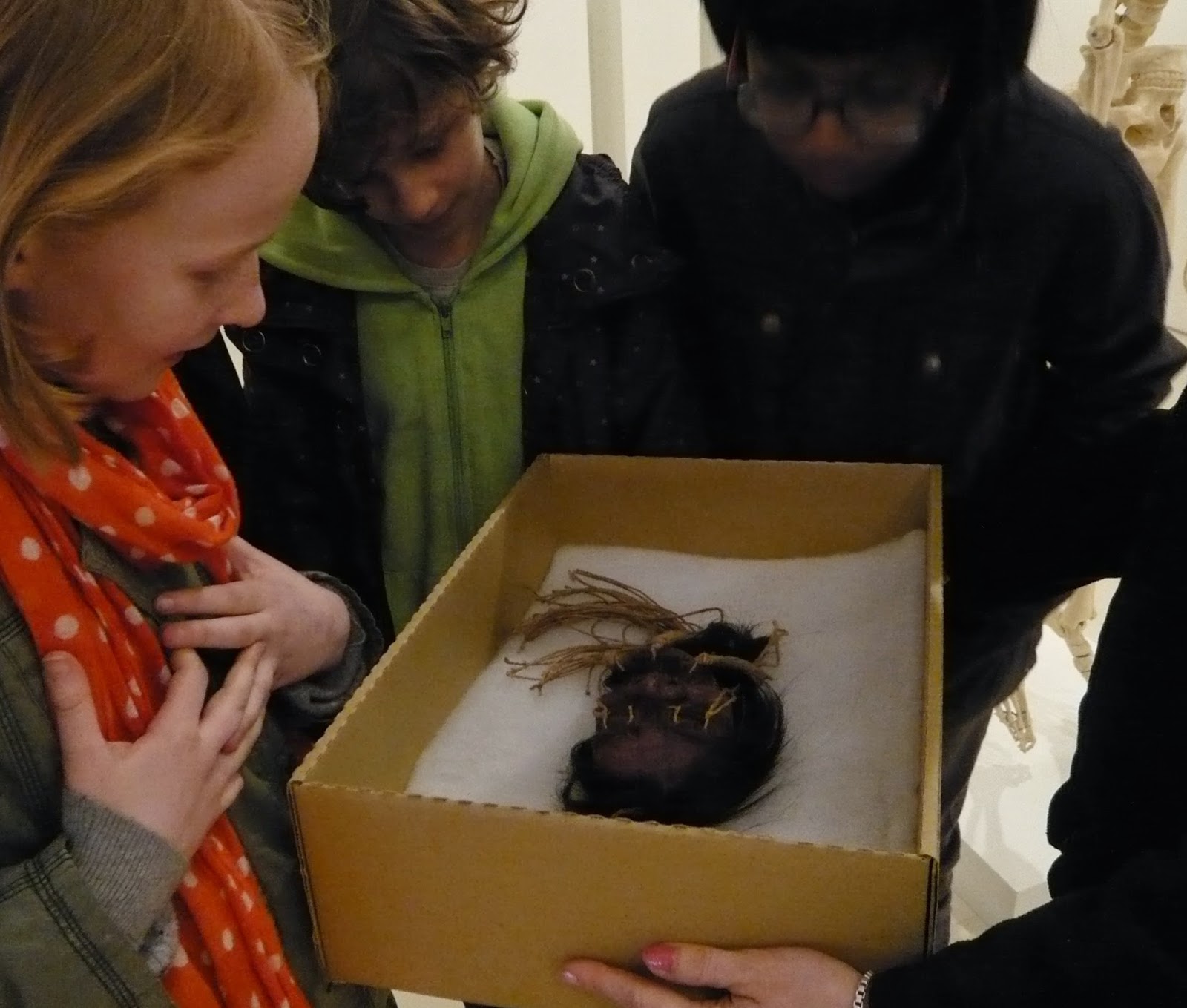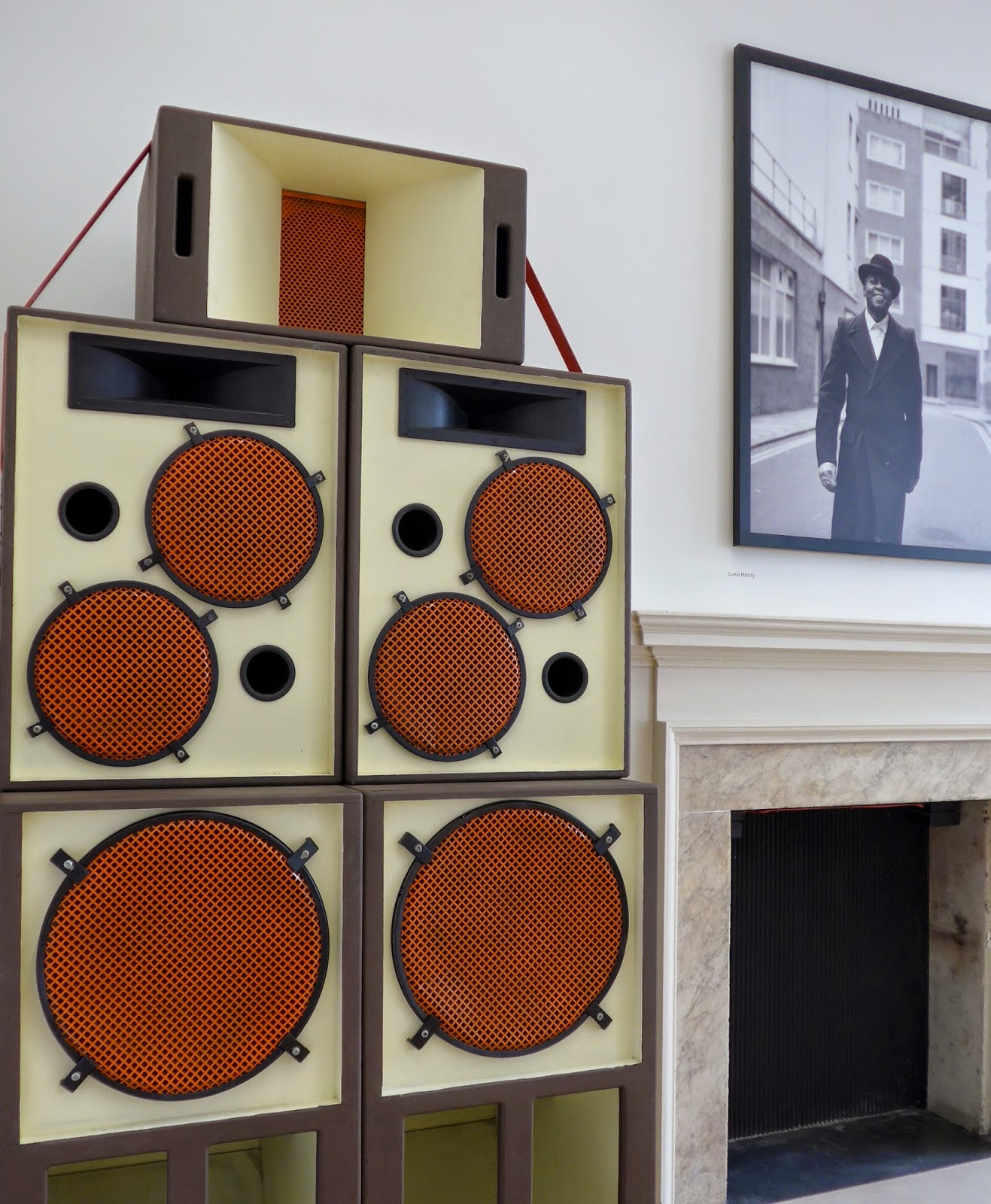We took advantage of a strike day to take friends to the Wellcome Collection,
in particular the Medicine Now gallery.
Medicine Now explores ideas about science from the perspective of
scientists, doctors and patients.
My perspective on medicine could only come from a patient perspective,
but I had in my care, four budding scientists.
but I had in my care, four budding scientists.
It's a gallery with a hands-on trolley...
...and staff to set you tasks.
Like building a skeleton.
How well do you know your bones?
"Meet Fiona & Steve"
Yep, they look anatomically correct.
It's not all science.
Some exhibits are art, responses to the human body, like
Palindrome by William Cobbing 2003.
It takes a while for the penny to drop,
to work out why it doesn't quite look right.
"Oh yeah!"
Next, internal organs,
getting them in the right places.
It was the liver that surprised me.
"I never knew the liver was so huge",
you can't tell from this photo.
"You can actually remove 90% of the liver and it will still function."
"Imagine losing your big toe.
Do you think you could balance?"
We practise lifting our big toes off the ground and trying to balance.
It's not easy. We need our big toes, they're important.
"Even in ancient Egypt they made prosthetic big toes."
"Out of what?"
"Leather and paper mainly, apparently they were comfortable."
Then we were introduced to a shrunken head.
A replica!
We still weren't that keen to touch it,
especially after hearing how they're made.
"Made for ceremonial purposes, the skull is removed, the head shrinks and it would stink."
"When finished with, they are discarded."
If you can't bear the sight of internal organs,
look away now.
At 70 years old, she donated her body, sliced for research and teaching.
I am intrigued as to what happened to her neck.
All her fluids have been replaced with plastic,
so unlike the shrunken head, I hope she doesn't smell.
Now you can see how big the liver is.
The Wellcome Collection encourage you to get involved.
Pick a word or two from the front of the card,
draw or write about them,
then add the card to the feedback wall.
I promise you, 'Unicorn' was on the front of the card.
I'm going to truly try and follow this advice from an insightful ten year old.
Top advice for a healthy life.
Even at a distance, if you don't get the chance to visit,
you can still get involved, via social media.
Curious Conversations is a participatory project.
Each week the Wellcome Collection poses a new question on Twitter and facebook.
Inspired by the answers they receive, Rob Bidder creates a new drawing.
Have a look at the Curious Questions page on their website here.
Such a great way of getting involved. #CuriousConversations
There are some inspiring answers.
A good day out, back to school tomorrow
with a little more insight into the human body.
The Wellcome Collection's opening hours vary,
check out their website here.
Free admission.
Update
The Wellcome Collection have just been in touch to explain the 'unicorn'.
If you'd like to read why 'unicorn' is on the front of the cards above and is the most popular word picked by visitors.
Click on & read this "The Power of Unicorns"
































































